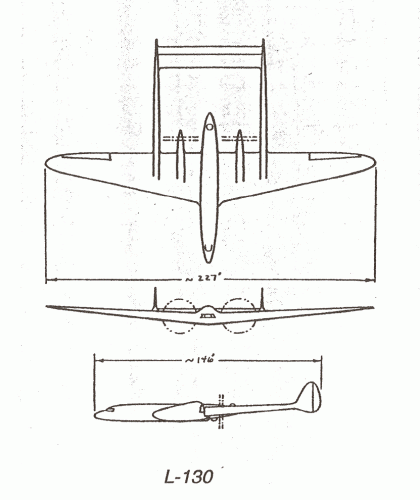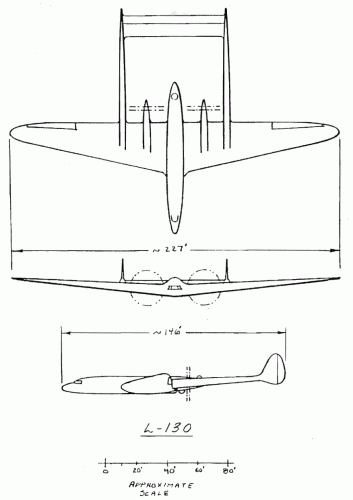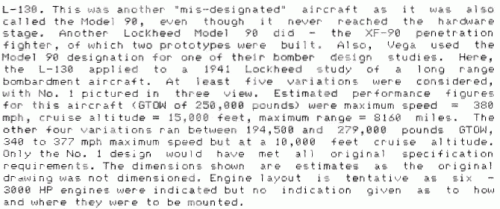- Joined
- 14 June 2006
- Messages
- 2,300
- Reaction score
- 561
Thanks to my friend Lark, I can post a simple 3-view of the Lockheed L-130-1, AKA as Model 90 (actually just the first to be called so). Only info are that it was studied in 1941 and was intended as a long-range bomber. Estimated data wre GTOW 250,000 lb, mx speed 380 mph max range 8160 miles. Cruise altitude is given as 15,000 feet. Dimensions are estimated as the same is valid for the engines layout, since six 3000 HP units were indicated (the arrangement in the drawing would imply a rather complex asymmetrical gearing). There were other four configurations (no drawing ) with GTOW going from 194,500 to 279,000 lb and max speed from 340 to 377 mph, cruise altitude 10,000 feet. Only L-130-1 would have adhered fully to the specification. Now, what specification. Being 1941 and looking at the drawing I'd bet the Intercontinental Bomber. If so, Lockheed too participated, besides Consolidated, Boeing, Douglas, Northrop, NAA and Burnelli. Any more info on this design?



